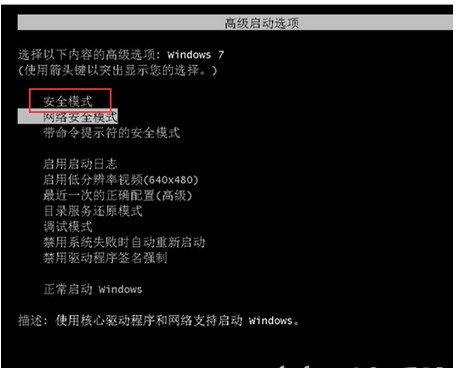 Backend Development
Backend Development C++
C++ How to deal with data backup and recovery issues in C++ big data development?
How to deal with data backup and recovery issues in C++ big data development?
How to deal with data backup and recovery problems in C big data development?
With the continuous development of technology, the increase in data volume has become a common phenomenon. In C big data development, data backup and recovery is an important task. How to efficiently handle data backup and recovery issues has become a difficult problem that many developers need to solve. This article will introduce a method for dealing with data backup and recovery issues in C big data development and provide corresponding code examples.
1. Data backup
1.1 File backup
First, we can store data in files and back up these files. Before backing up data, we need to open the file, read the data in it, and write the data to a new file to back up the data.
The following is a sample code that demonstrates how to implement file backup:
#include <iostream>
#include <fstream>
using namespace std;
int main() {
string inputFile = "data.txt"; // 原始数据文件
string backupFile = "backup.txt"; // 备份文件
ifstream fin(inputFile);
ofstream fout(backupFile);
if (fin && fout) {
// 读取原始数据并写入备份文件
string data;
while (getline(fin, data)) {
fout << data << endl;
}
cout << "数据备份成功!" << endl;
} else {
cout << "文件打开失败!" << endl;
}
fin.close();
fout.close();
return 0;
}In the above code, we first specify the paths of the original data file and backup file. Then, open the original data file and backup file through ifstream and ofstream objects respectively. Next, we read the raw data line by line and write the data to the backup file. Finally, we close the file stream and output a message that the backup was successful.
1.2 Database Backup
In addition to file backup, we can also store data in the database and achieve data backup by backing up the database. In C, we can use third-party libraries, such as MySQL Connector/C, to implement database backup operations.
The following is a sample code that demonstrates how to use the MySQL Connector/C library to implement database backup:
#include <iostream>
#include <mysql_driver.h>
#include <mysql_connection.h>
using namespace std;
using namespace sql;
int main() {
string hostName = "localhost";
string userName = "root";
string password = "password";
string databaseName = "data";
sql::mysql::MySQL_Driver *driver;
sql::Connection *connection;
driver = sql::mysql::get_mysql_driver_instance();
connection = driver->connect(hostName, userName, password);
// 备份数据
connection->setSchema(databaseName);
sql::Statement *statement = connection->createStatement();
statement->execute("BACKUP DATABASE " + databaseName + " TO 'backup.sql'");
cout << "数据库备份成功!" << endl;
delete statement;
delete connection;
return 0;
}In the above code, we first specify the database connection information (such as host name, username, password, etc.). Then, we obtain the connection object through the mysql driver and use the connection object to back up the database. Finally, we release the relevant resources and output information that the backup was successful.
2. Data recovery
2.1 File recovery
For file backup, we can achieve data recovery by writing the data in the backup file to the original file.
The following is a sample code that demonstrates how to achieve file recovery:
#include <iostream>
#include <fstream>
using namespace std;
int main() {
string inputFile = "backup.txt"; // 备份文件
string outputFile = "data.txt"; // 原始数据文件
ifstream fin(inputFile);
ofstream fout(outputFile);
if (fin && fout) {
// 读取备份文件并写入原始数据文件
string data;
while (getline(fin, data)) {
fout << data << endl;
}
cout << "数据恢复成功!" << endl;
} else {
cout << "文件打开失败!" << endl;
}
fin.close();
fout.close();
return 0;
}In the above code, we first specify the paths of the backup file and the original data file. Then, open the backup file and original data file through ifstream and ofstream objects respectively. Next, we read the backup file line by line and write the data to the original file. Finally, we close the file stream and output a successful recovery message.
2.2 Database recovery
For database backup, we can implement data recovery by executing SQL statements and importing the data in the backup file into the database.
The following is a sample code that demonstrates how to use the MySQL Connector/C library to achieve database recovery:
#include <iostream>
#include <mysql_driver.h>
#include <mysql_connection.h>
using namespace std;
using namespace sql;
int main() {
string hostName = "localhost";
string userName = "root";
string password = "password";
string databaseName = "data";
sql::mysql::MySQL_Driver *driver;
sql::Connection *connection;
driver = sql::mysql::get_mysql_driver_instance();
connection = driver->connect(hostName, userName, password);
// 执行恢复SQL语句
connection->setSchema(databaseName);
sql::Statement *statement = connection->createStatement();
statement->execute("SOURCE backup.sql");
cout << "数据库恢复成功!" << endl;
delete statement;
delete connection;
return 0;
}In the above code, we first specify the connection information of the database (such as host name, username, password, etc.). Then, we obtain the connection object through the mysql driver and use the connection object to execute the recovery SQL statement. Finally, we release the relevant resources and output the recovery success message.
Conclusion
Data backup and recovery are important links that cannot be ignored in C big data development. This article introduces two methods to deal with data backup and recovery issues in C big data development through file backup/recovery and database backup/recovery, and provides corresponding code examples. Choosing an appropriate backup/recovery method can effectively protect data security and improve development efficiency. I hope this article can help readers with their data backup and recovery work in C big data development.
The above is the detailed content of How to deal with data backup and recovery issues in C++ big data development?. For more information, please follow other related articles on the PHP Chinese website!
 windows7系统注册表文件遗失或损坏怎么办Jul 08, 2023 pm 05:29 PM
windows7系统注册表文件遗失或损坏怎么办Jul 08, 2023 pm 05:29 PMwindows7用户在启动时遇到了系统注册表文件遗失或损坏的现象,像这种情况要怎么解决呢?你先强制重启电脑,以后按F8键,在打开的页面中选择安全模式进到,之后在菜单栏找到命令提示符开启,输入SFC/SCANNOW指令并回车实行,这时候系统就会自动对电脑缺失或已损坏的安装文件进行修复。windows7系统注册表文件遗失或损坏怎么办1、最先开机自检之后,立刻按住F8键,应用方向键挑选安全模式,敲打回车即可。2、以后点击开始按钮,挑选命令提示符,以管理员的身份运作。3、最后在弹出的提示符中输入SFC/
 ThinkPHP6数据备份与恢复:保障数据的安全性Aug 13, 2023 am 08:28 AM
ThinkPHP6数据备份与恢复:保障数据的安全性Aug 13, 2023 am 08:28 AMThinkPHP6数据备份与恢复:保障数据的安全性随着互联网的快速发展,数据已成为一项极其重要的资产。因此,数据的安全性备受关注。在Web应用开发中,数据备份与恢复是确保数据安全的重要一环。在本文中,我们将介绍如何使用ThinkPHP6框架进行数据备份与恢复,以保障数据的安全性。一、数据备份数据备份是指将数据库中的数据以某种方式进行复制或存储。这样即使在数据
 如何在Laravel中使用中间件进行数据恢复Nov 02, 2023 pm 02:12 PM
如何在Laravel中使用中间件进行数据恢复Nov 02, 2023 pm 02:12 PMLaravel是一个流行的PHPWeb应用程序框架,提供了许多快速而又简单的方式来构建高效、安全和可扩展的Web应用程序。在开发Laravel应用程序时,我们经常需要考虑数据恢复的问题,即如何在数据丢失或损坏的情况下恢复数据并保证应用程序的正常运行。在本文中,我们将介绍如何使用Laravel中间件来实现数据恢复功能,并提供具体的代码示例。一、什么是Lara
 如何快速恢复MySQL数据库遭遇的故障和错误?Sep 10, 2023 pm 03:45 PM
如何快速恢复MySQL数据库遭遇的故障和错误?Sep 10, 2023 pm 03:45 PM如何快速恢复MySQL数据库遭遇的故障和错误?MySQL是一种广泛使用的开源关系型数据库管理系统,许多应用程序和网站都依赖于它来存储和管理数据。然而,数据库故障和错误是不可避免的,这可能导致数据丢失或应用程序无法正常运行。在遭遇MySQL数据库故障或错误时,快速而有效地恢复数据库非常重要。本文将介绍一些快速恢复MySQL数据库的方法。确定故障和错误的类型在开
 Linux系统文件损坏与丢失应对方案Jun 30, 2023 am 09:29 AM
Linux系统文件损坏与丢失应对方案Jun 30, 2023 am 09:29 AM标题:如何应对Linux系统中的文件损坏和丢失问题引言:在使用Linux系统的过程中,文件损坏和丢失是一个不容忽视的问题。由于各种原因,我们可能会面临文件丢失、文件损坏或无法访问文件的情况。然而,幸运的是,Linux系统提供了一些实用工具和技术,帮助我们有效地应对文件损坏和丢失问题。本文将介绍一些常见的解决方法和技巧。一、备份数据备份是最重要的应对文件损坏和
 华为电脑数据恢复Jan 12, 2024 pm 05:17 PM
华为电脑数据恢复Jan 12, 2024 pm 05:17 PM华为电脑数据恢复的方法:1、从回收站恢复;2、使用数据恢复软件;3、从备份中恢复;4、使用华为云服务。详细介绍:1、从回收站恢复,如果华为电脑的数据被删除后,这些数据并没有被新的文件覆盖,那么可以从回收站中恢复这些数据;2、使用数据恢复软件,如果回收站中没有需要恢复的数据,或者数据被覆盖了,可以使用数据恢复软件来恢复华为电脑中的数据;3、从备份中恢复,如果华为电脑等等。
 PHP表单处理:表单数据备份与恢复Aug 07, 2023 pm 10:19 PM
PHP表单处理:表单数据备份与恢复Aug 07, 2023 pm 10:19 PMPHP表单处理:表单数据备份与恢复引言在网站开发过程中,表单是非常常见的交互方式,用户通过填写表单将数据提交给服务器端处理。然而,有时候用户可能会因为网络问题、浏览器崩溃或其他意外情况导致表单数据丢失,这会给用户的使用体验带来困扰。因此,为了提升用户体验,我们可以通过PHP实现表单数据的自动备份与恢复功能,以确保用户填写的数据不会丢失。表单数据备份当用户在表
![Windows媒体创建工具删除了我的文件 [恢复指南]](https://img.php.cn/upload/article/000/887/227/168239259339851.png) Windows媒体创建工具删除了我的文件 [恢复指南]Apr 25, 2023 am 11:16 AM
Windows媒体创建工具删除了我的文件 [恢复指南]Apr 25, 2023 am 11:16 AMWindowsPC上的媒体创建工具是一个实用工具,允许用户将其计算机升级到最新的Windows版本。此外,它还有助于创建Windows安装USB驱动器光盘,可用于执行全新安装或修复有问题的WindowsPC。但是,用户抱怨Windows媒体创建工具在运行时删除了其PC上的文件。此外,我们还有一个详细的指南来修复0x80072f8f-0x20000升级操作系统时出现的媒体创建工具错误。为什么Windows媒体创建工具删除了我的文件?Windows媒体创建工具删除PC上的文件发生在下载软件开始下载时


Hot AI Tools

Undresser.AI Undress
AI-powered app for creating realistic nude photos

AI Clothes Remover
Online AI tool for removing clothes from photos.

Undress AI Tool
Undress images for free

Clothoff.io
AI clothes remover

AI Hentai Generator
Generate AI Hentai for free.

Hot Article

Hot Tools

ZendStudio 13.5.1 Mac
Powerful PHP integrated development environment

WebStorm Mac version
Useful JavaScript development tools

Notepad++7.3.1
Easy-to-use and free code editor

mPDF
mPDF is a PHP library that can generate PDF files from UTF-8 encoded HTML. The original author, Ian Back, wrote mPDF to output PDF files "on the fly" from his website and handle different languages. It is slower than original scripts like HTML2FPDF and produces larger files when using Unicode fonts, but supports CSS styles etc. and has a lot of enhancements. Supports almost all languages, including RTL (Arabic and Hebrew) and CJK (Chinese, Japanese and Korean). Supports nested block-level elements (such as P, DIV),

MinGW - Minimalist GNU for Windows
This project is in the process of being migrated to osdn.net/projects/mingw, you can continue to follow us there. MinGW: A native Windows port of the GNU Compiler Collection (GCC), freely distributable import libraries and header files for building native Windows applications; includes extensions to the MSVC runtime to support C99 functionality. All MinGW software can run on 64-bit Windows platforms.




